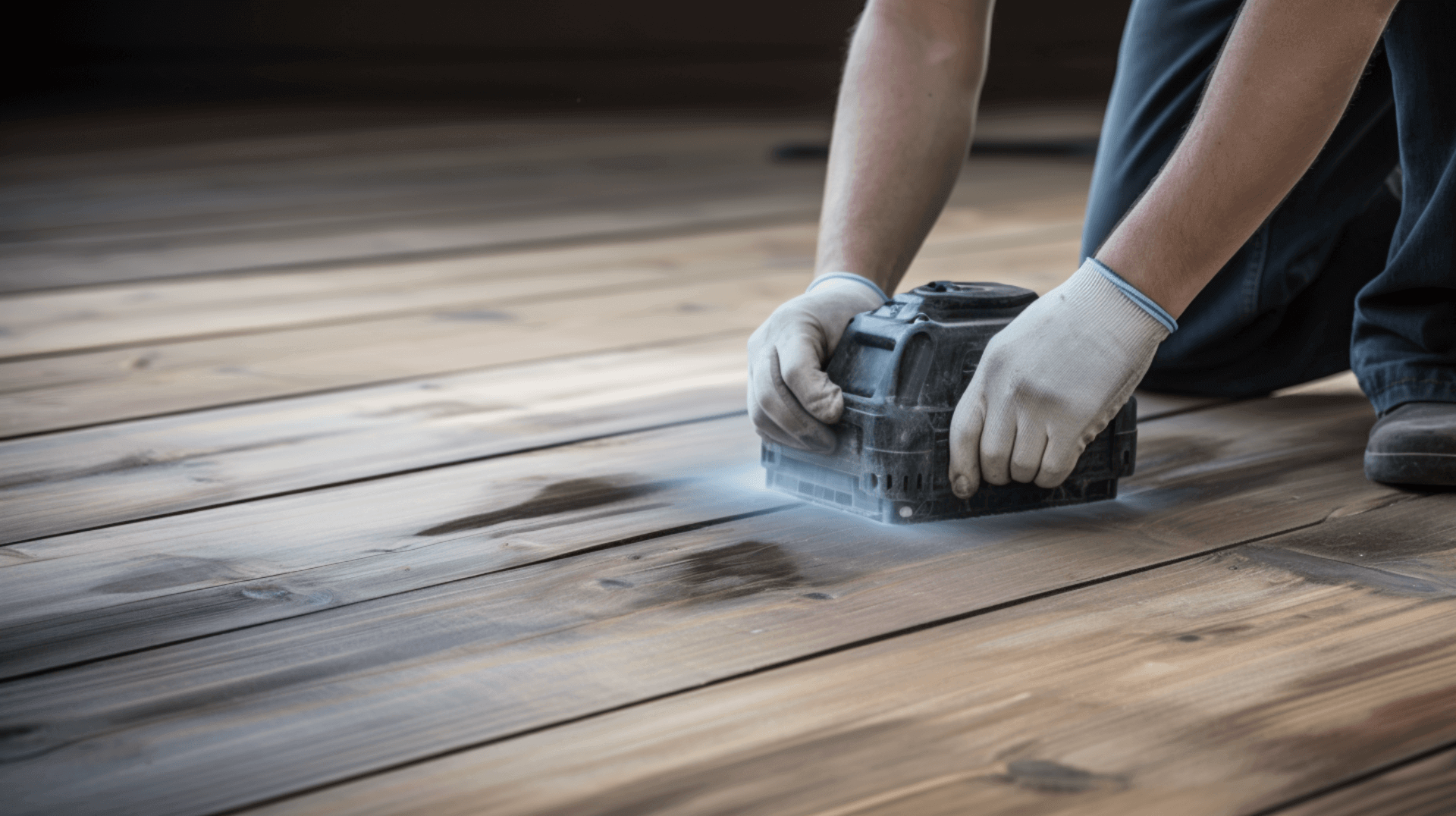Understanding Mold and Mildew on Wooden Floors
Mold and mildew are fungi that can grow on wooden floors, causing discoloration, staining, and deterioration. Mold and mildew thrive in warm, damp environments and can be caused by high humidity, poor ventilation, and inadequate cleaning.
When mold and mildew grow on wooden floors, they can cause damage to the wood, leading to costly repairs. They can also cause health problems, such as allergies and respiratory issues. It is important for both homeowners and business owners to address mold and mildew on wooden floors promptly.
Mold and mildew can be identified by their musty odor and dark spots on the wood. They can also cause warping and cracking of the wood. To prevent mold and mildew from growing on wooden floors, it is crucial to keep the humidity levels low and ensure proper ventilation. Regular cleaning and maintenance are also essential.
If mold and mildew are already present on wooden floors, it is important to take immediate action. This can be done by using appropriate cleaning products and techniques, such as scrubbing with a brush and a cleaning solution. It is crucial to address any water damage or leaks as soon as possible, as they can contribute to mold and mildew growth.
Overall, understanding mold and mildew on wooden floors is crucial for homeowners and business owners to prevent damage to the wood and maintain a healthy environment.
Identifying Mold and Mildew on Your Wooden Floor
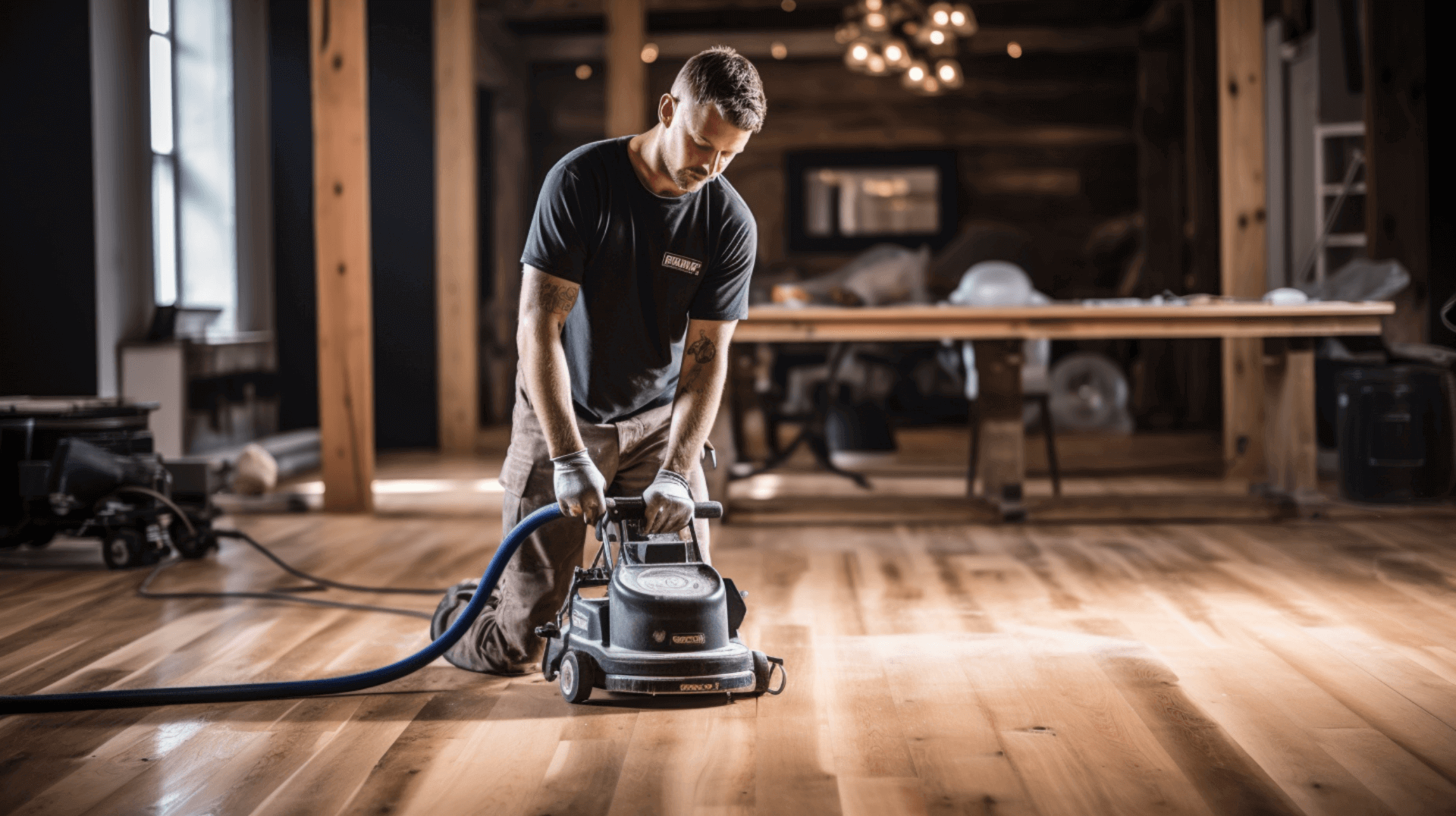
Visual signs of mold and mildew on a wooden floor include dark spots, discoloration, and staining. These can be easily seen on the surface of the wood. Additionally, mold and mildew can cause the wood to appear warped or cracked, indicating their presence.
The smell and texture of the wood can also help identify mold and mildew. Mold and mildew have a distinct musty odor, which can be easily detected. The wood may also feel damp or slimy to the touch, indicating the presence of mold and mildew growth.
If mold and mildew are left untreated on wooden floors, they can cause significant damage. The wood may deteriorate and become weakened, leading to costly repairs. In addition to the damage to the wood, mold and mildew can also pose health risks. They can trigger allergies and respiratory issues, especially in individuals who are sensitive to mold spores.
To prevent further damage and maintain a healthy environment, it is important to identify and address mold and mildew on wooden floors promptly. This can be done by cleaning and treating the affected areas with appropriate products. It is also crucial to address any underlying issues that may be contributing to mold and mildew growth, such as high humidity or water leaks. Regular maintenance and cleaning can help prevent mold and mildew from recurring on wooden floors.
The Impact of Mold and Mildew on Wooden Floor’s Health and Longevity

Mold and mildew can have a significant impact on the structural integrity of a wooden floor. They can cause the wood to become weakened and deteriorated, leading to warping, cracking, and other damage. In extreme cases, the wood may need to be replaced entirely.
The long-term effects of mold and mildew on wooden floors can be significant. If left untreated, the wood can become severely damaged and require costly repairs or even replacement. In addition, mold and mildew can cause discoloration and staining, which can be difficult to remove.
Mold and mildew can also have an impact on the overall value of a property. If a potential buyer notices mold and mildew on the wooden floors, they may be less likely to purchase the property. Additionally, mold and mildew can cause health issues, which can be a major concern for potential buyers.
To prevent further damage and maintain a healthy environment, it is important to identify and address mold and mildew on wooden floors promptly. This can be done by cleaning and treating the affected areas with appropriate products. It is also crucial to address any underlying issues that may be contributing to mold and mildew growth, such as high humidity or water leaks. Regular maintenance and cleaning can help prevent mold and mildew from recurring on wooden floors.
Can You Sand and Refinish a Wooden Floor with Mold or Mildew?
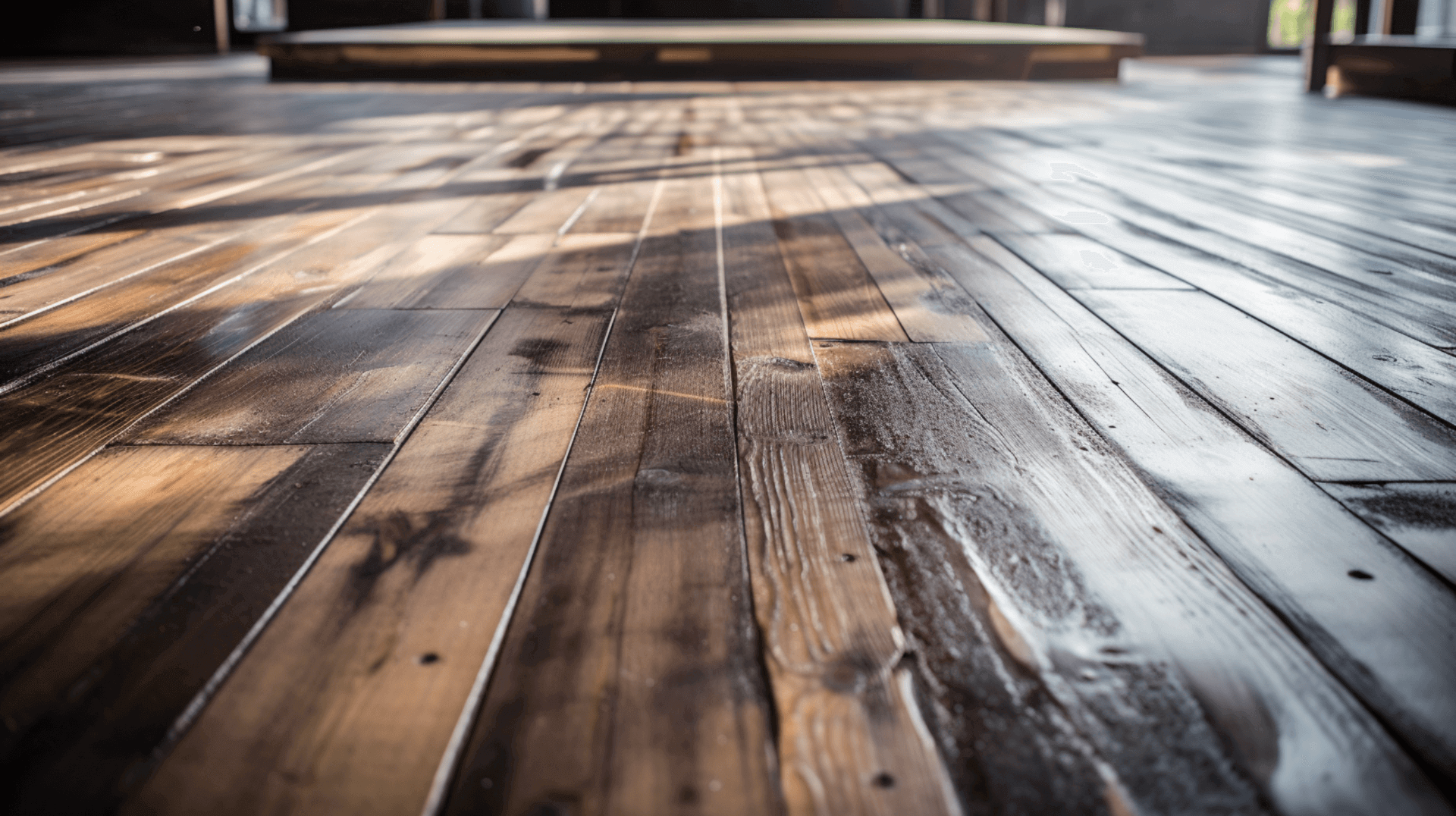
Sanding and refinishing a wooden floor with mold or mildew can be done, but it is important to take the necessary precautions. It is crucial to ensure that the mold and mildew are completely removed before sanding and refinishing the floor. If the mold and mildew are not properly addressed, they can spread to other areas of the floor and cause further damage.
The potential risks involved in sanding and refinishing a wooden floor with mold or mildew include the spread of mold and mildew spores, which can cause health issues. Additionally, sanding and refinishing a wooden floor with mold or mildew can exacerbate the damage to the wood, leading to more extensive repairs.
To safely sand and refinish a wooden floor with mold or mildew, it is important to follow these precautions:
- Ensure that the mold and mildew are completely removed using appropriate cleaning products and techniques.
- Wear protective clothing, including gloves and a respirator, to prevent the inhalation of mold spores.
- Use a HEPA filter vacuum to collect any dust and debris that may be released during the sanding process.
- Ensure that the area is well-ventilated by opening windows and doors to introduce heat and airflow.
- Check for any water or condensate pipes in the sub-floor voids, as these can increase the risk of freezing and further damage to the wooden floor.
By following these precautions, you can safely sand and refinish a wooden floor with mold or mildew, minimizing health risks and ensuring the longevity of the floor.
Preparing Your Wooden Floor for Sanding and Refinishing
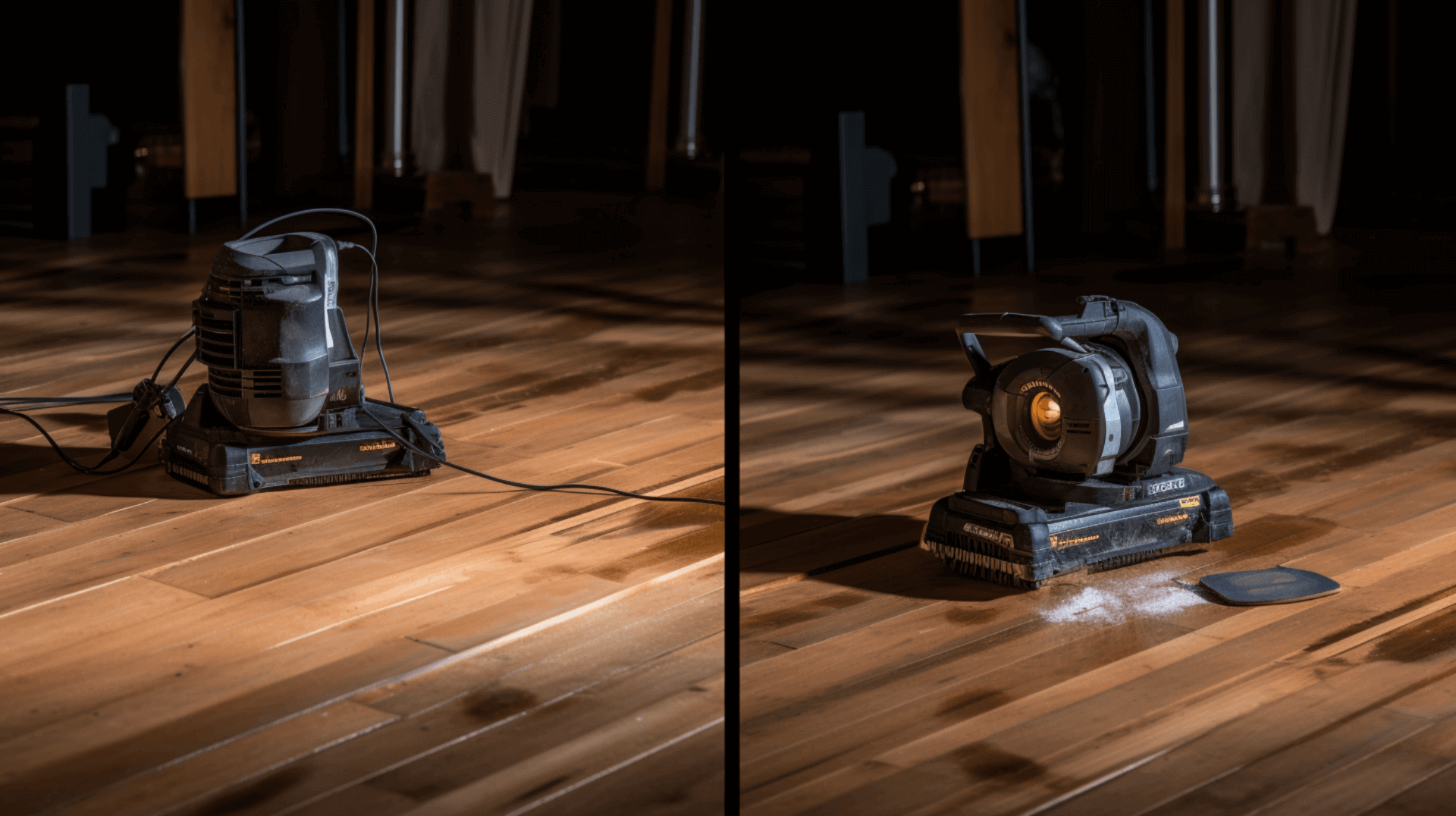
Preparing a wooden floor with mold or mildew for sanding and refinishing requires several steps. First, it is important to ensure that the mold and mildew are completely removed using appropriate cleaning products and techniques. This will help prevent the spread of mold and mildew spores and ensure that the sanding and refinishing process is successful. Additionally, it is important to use a HEPA filter vacuum to collect any dust and debris that may be released during the sanding process.
Visual inspection of the entire floor should be done to identify any water or condensate pipes in the sub-floor voids, as these can increase the risk of freezing and further damage to the wooden floor. Repairs may be required to facilitate the installation of insulation or address any pre-existing problems or defects. It is important to conduct a thorough check and declare any issues to the customer before starting work to establish transparency and avoid disputes.
During the preparation process, it is important for the technician to explain to the customer the purpose of the visit and what they can expect. They should also use shoe protectors or covers when entering the property to protect the customer’s floors. If necessary, with the customer’s permission, materials and possessions should be removed from the work area to ensure their safety and prevent any damage.
By following these steps and taking the necessary precautions, you can effectively prepare a wooden floor with mold or mildew for sanding and refinishing, ensuring a successful and safe process.
The Process of Sanding a Wooden Floor with Mold or Mildew
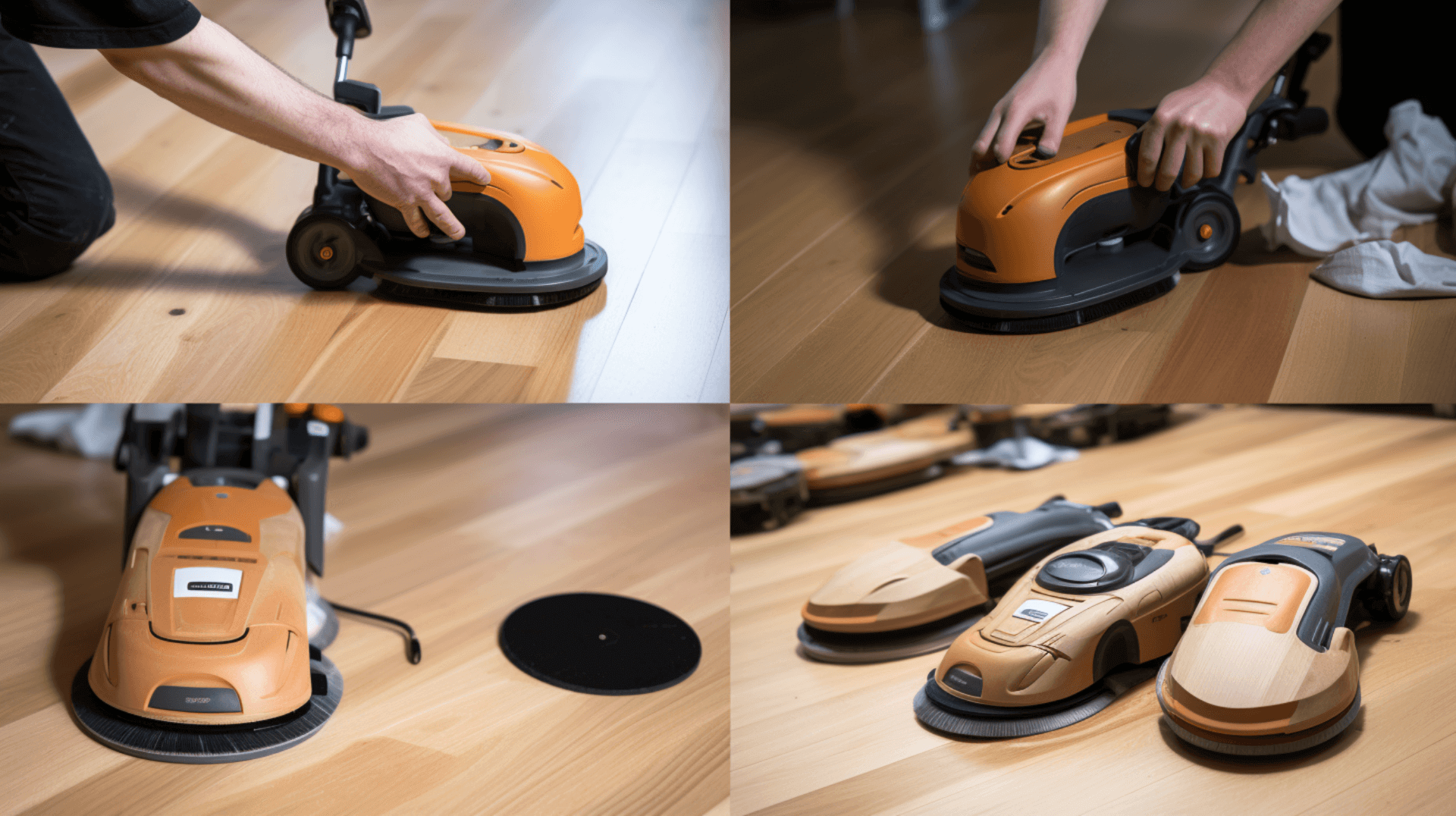
Sanding a wooden floor with mold or mildew requires the correct technique and precautions to ensure the mold or mildew is completely removed and the spread of mold or mildew is prevented.
The correct technique for sanding a wooden floor with mold or mildew is to start with a coarse grit sandpaper and gradually move to a finer grit. This will help to remove any deep-seated mold or mildew and ensure a smooth finish. It is important to use a HEPA filter vacuum to collect any dust and debris that may be released during the sanding process.
To ensure the mold or mildew is completely removed during sanding, it is important to use appropriate cleaning products and techniques. This will help to remove any remaining mold or mildew and prevent the spread of spores. Additionally, it is important to use a moisture meter to check the moisture content of the wood before and after sanding.
To prevent the spread of mold or mildew during sanding, it is important to wear protective clothing, including gloves and a respirator, to prevent the inhalation of mold spores. Additionally, it is important to ensure that the area is well-ventilated by opening windows and doors to introduce heat and airflow.
By following these steps and taking the necessary precautions, you can safely and effectively sand a wooden floor with mold or mildew, ensuring a clean and healthy environment.
Refinishing Your Wooden Floor After Sanding
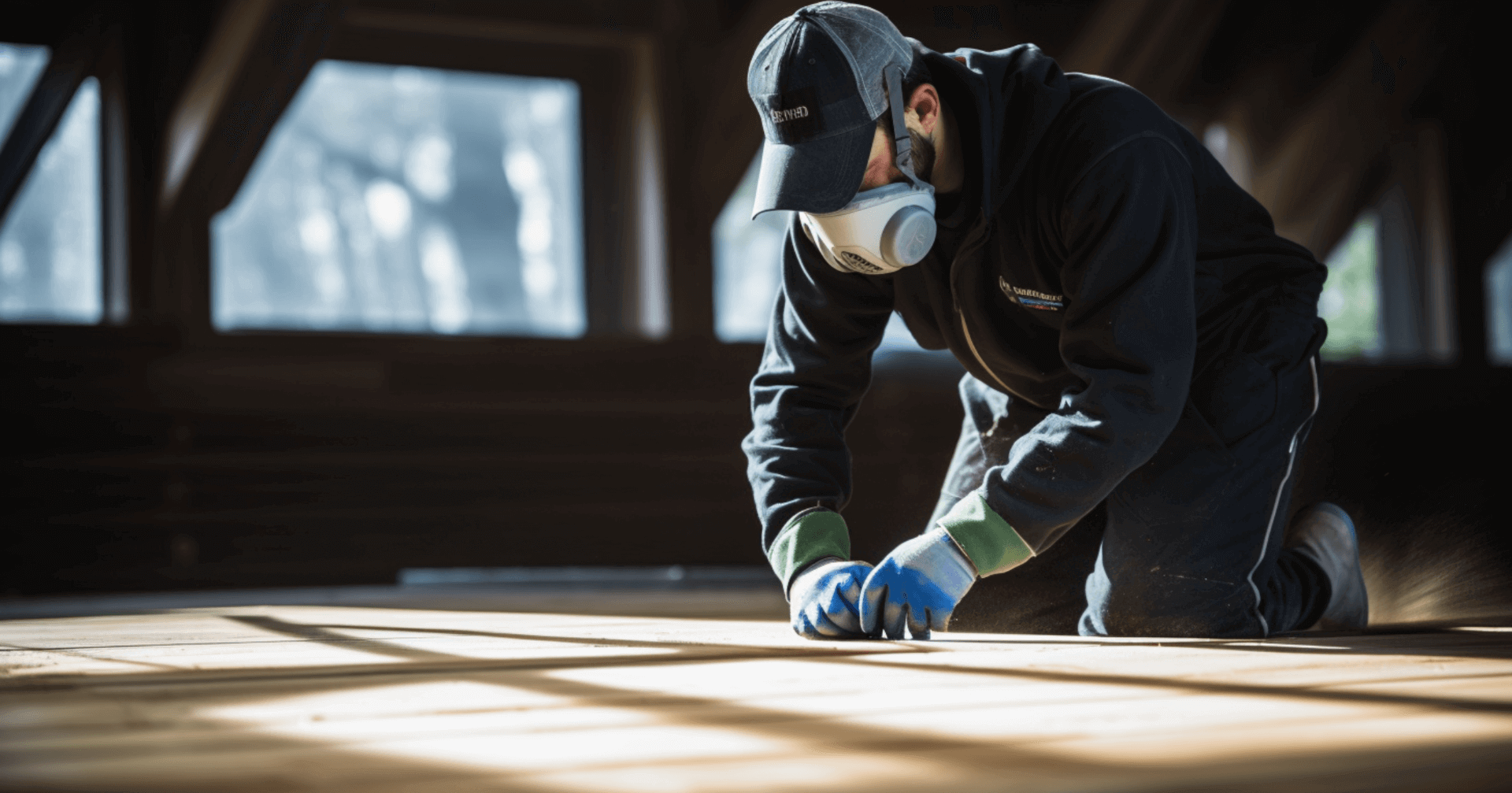
Refinishing a wooden floor after sanding requires several steps to ensure the mold or mildew does not return and the floor is properly protected.
The first step is to ensure that the floor is completely dry before applying any finish. This can be done by using a moisture meter to check the moisture content of the wood. It is important to reference the EMC chart and consider the time of year the repairs are to take place to assess the HVAC system’s ability to sustain an adequate environment. Insulated pin, hammer probe-type meters and pinless, dielectric meters should be used to achieve readings at multiple depths of flooring and subflooring material and scan the flooring surface to map the damage. The target moisture content should be within 2% of expected in-use moisture content.
Additionally, it is important to use a HEPA filter vacuum to collect any dust and debris that may be released during the sanding process. This will help maintain a clean and safe environment during the refinishing process.
It is also important to thoroughly investigate all suspect timbers near actual or potential sources of dampness. Probing with a sharp implement, like a bradawl, can help identify any hidden moisture or damage. Checking for any water or condensate pipes in the sub-floor voids is crucial, as these can increase the risk of freezing and further damage to the wooden floor. Repairs may be required to address any pre-existing problems or defects and facilitate the installation of insulation.
During the preparation process, it is important to explain to the customer the purpose of the visit and what they can expect. Using shoe protectors or covers when entering the property helps protect the customer’s floors. If necessary, with the customer’s permission, materials and possessions should be removed from the work area to ensure their safety and prevent any damage.
By following these steps and taking the necessary precautions, you can effectively refinish a wooden floor after sanding, preventing the return of mold or mildew and ensuring the longevity of the floor.
Maintaining Your Wooden Floor PostRefinishing
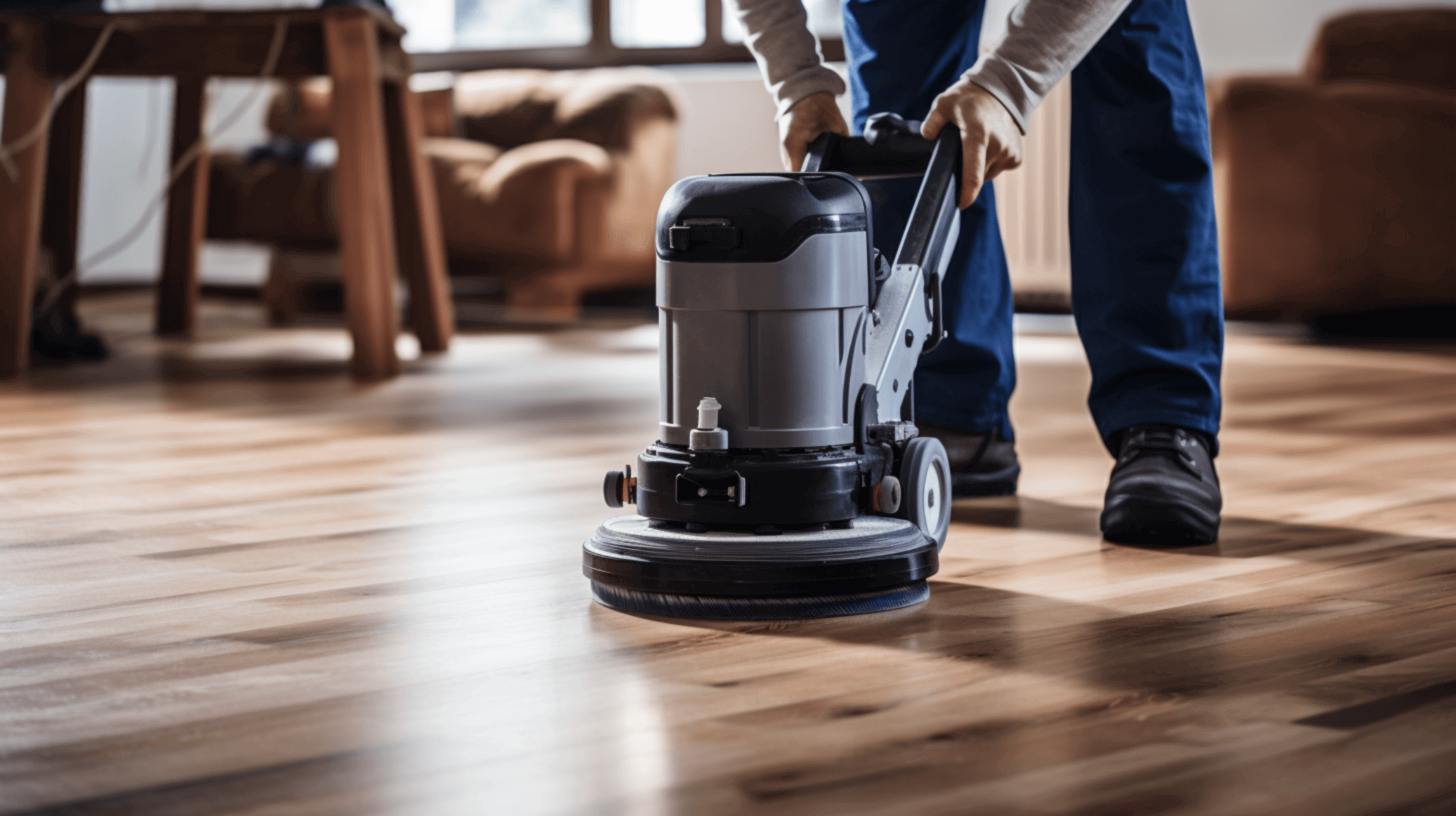
Maintaining a wooden floor after sanding and refinishing requires several steps to ensure the longevity of the floor and prevent the recurrence of mold or mildew.
To maintain the floor, it is important to use appropriate cleaning products and techniques that effectively remove dirt and debris. This will help prevent the spread of mold or mildew. Additionally, using a HEPA filter vacuum during the cleaning process will collect any dust and debris, ensuring a clean and safe environment.
Regularly checking for signs of mold or mildew is crucial. Visual inspections of the floor and using a moisture meter to measure the moisture content of the wood are effective methods. If any signs of mold or mildew are detected, immediate action should be taken to address the issue and prevent further growth.
To prevent the recurrence of mold or mildew, it is important to maintain a clean and dry environment. This can be achieved by ensuring proper ventilation in the area. Opening windows and doors to introduce heat and airflow will help keep the floor dry and inhibit the growth of mold or mildew. Additionally, checking for any water or condensate pipes in the sub-floor voids is important, as they can contribute to moisture issues and further damage to the wooden floor. Repairs may be necessary to address any pre-existing problems or defects and facilitate insulation installation.
By following these steps and taking the necessary precautions, you can effectively maintain your wooden floor after sanding and refinishing, ensuring its longevity and preventing the recurrence of mold or mildew.
When to Seek Professional Help for Mold or Mildew on Wooden Floors
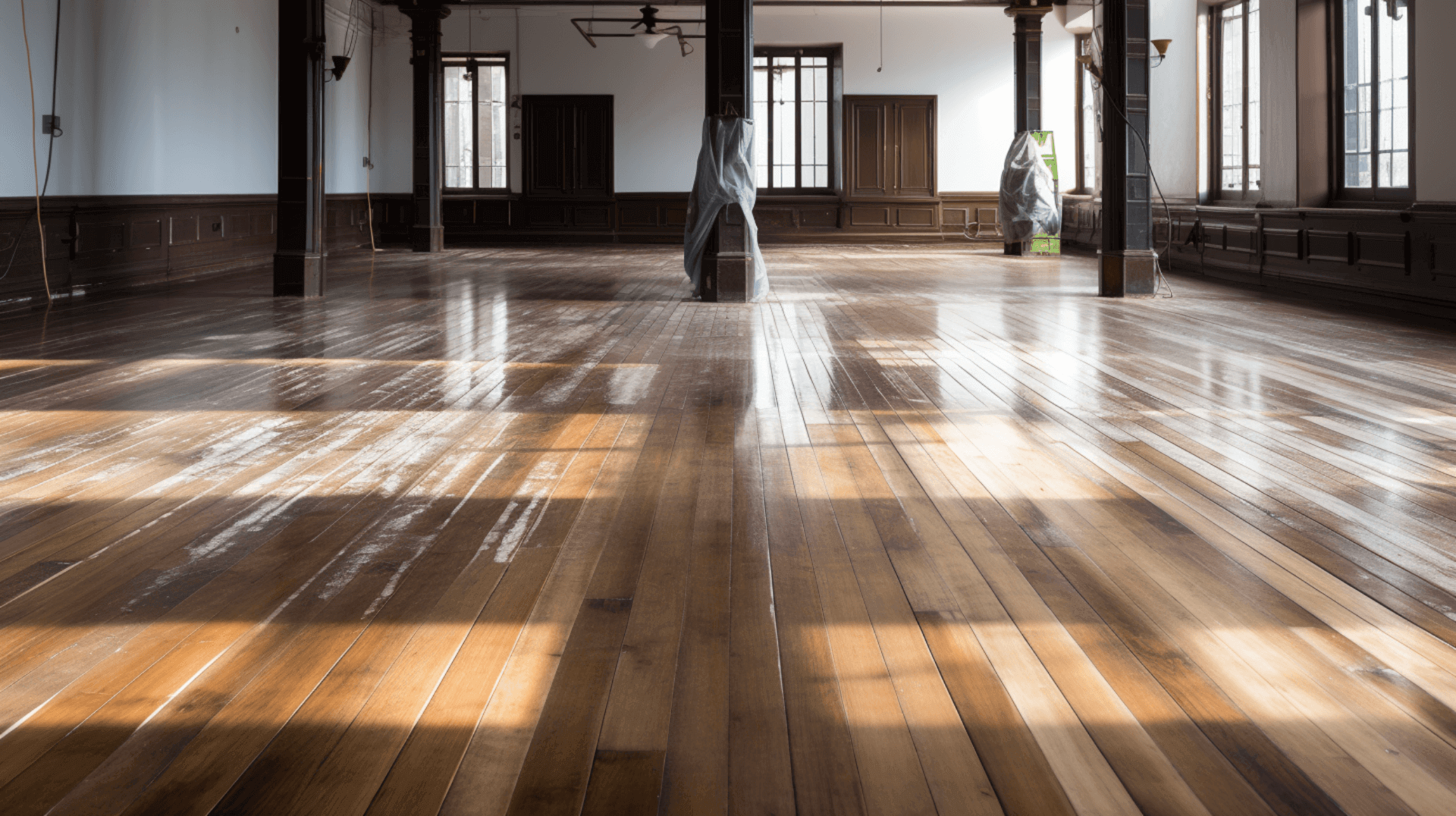
When mold or mildew is present on a wooden floor, it is necessary to seek professional help from GJP Floor Sanding to ensure the complete removal of the mold or mildew and prevent its recurrence. Our team of experienced professionals offers a comprehensive range of services to address this issue.
GJP Floor Sanding begins by conducting visual inspections and using moisture meter readings to assess the extent of the damage. Based on our findings, we provide expert advice on the best course of action. Our services include sanding, cleaning, and refinishing the wooden floor.
To ensure the complete removal of mold or mildew, GJP Floor Sanding uses appropriate cleaning products and techniques that effectively eliminate any remaining mold or mildew and prevent the spread of spores. We also employ a HEPA filter vacuum during the sanding process to collect any dust and debris, maintaining a clean and safe environment.
In addition, the professionals at GJP Floor Sanding check for any water or condensate pipes in the sub-floor voids, as these can contribute to moisture issues and further damage to the wooden floor. We may recommend repairs to address any pre-existing problems or defects and facilitate insulation installation.
By seeking professional help from GJP Floor Sanding, you can be confident in the complete removal of mold or mildew from your wooden floor. Our comprehensive services and expertise will restore your floor to its optimal condition and prevent the recurrence of mold or mildew.
The GJP Floor Sanding Approach to Mold and Mildew on Wooden Floors
GJP Floor Sanding offers a comprehensive approach to handling mold or mildew on wooden floors. Our team of experienced professionals begins by conducting visual inspections and using moisture meter readings to assess the extent of the damage. Based on our findings, we provide expert advice on the best course of action. We also sound with a large hammer to probe for any hidden moisture or damage and check for any water or condensate pipes in the sub-floor voids, as these can contribute to moisture issues and further damage to the wooden floor.
Their approach is unique and effective due to their use of appropriate cleaning products and techniques that effectively eliminate any remaining mold or mildew and prevent the spread of spores. They also employ a HEPA filter vacuum during the sanding process to collect any dust and debris, maintaining a clean and safe environment. Additionally, they may recommend repairs to address any pre-existing problems or defects and facilitate insulation installation.
In terms of safety considerations, GJP Floor Sanding takes precautions to ensure the safety of both our workers and the customer’s property. We appropriately cordon or barrier any openings or hazards to prevent accidents or damage. We also inform the customer about the work being carried out, including any areas that may not be accessible during the process. This could include whole rooms if floorboards are lifted. By prioritizing safety and communication, GJP Floor Sanding ensures a smooth and secure experience for our customers.
By choosing GJP Floor Sanding, you can trust that our experienced professionals will handle the mold or mildew on your wooden floor with care and expertise. We will effectively eliminate the issue, address any underlying problems, and ensure the longevity of your wooden floor.
Contact GJP Floor Sanding for Your Wooden Floor Needs
If you are looking for a reliable and experienced team to handle your wooden floor needs, look no further than GJP Floor Sanding. We offer a comprehensive approach to handling mold or mildew on wooden floors, which includes conducting visual inspections, using moisture meter readings, and checking for potential issues like water or condensate pipes, gas pipes, electrical wiring, flues, underfloor heating, damp-proof courses, and condensation that could affect the installation of insulation.
Their unique and effective approach involves using appropriate cleaning products and techniques to eliminate any remaining mold or mildew and prevent the spread of spores. They also employ a HEPA filter vacuum during the sanding process to maintain a clean and safe environment. Additionally, they may recommend repairs to address pre-existing problems or defects and facilitate insulation installation. They provide guidance from BR262 Thermal Insulation Avoiding Risk and offer various installation methods.
When you choose GJP Floor Sanding, you can expect a secure experience due to our commitment to safety. We take precautions to ensure the safety of both our workers and the customer’s property. We thoroughly inspect for potential issues like gas pipes, electrical wiring, flues, underfloor heating, damp-proof courses, and condensation that could affect the installation of insulation. By prioritizing safety and thorough inspections, GJP Floor Sanding provides a secure experience for our customers.
Overall, customers recommend GJP Floor Sanding for our mold and mildew removal services due to our comprehensive approach, attention to detail, commitment to safety, and expertise in addressing various issues related to wooden floors. Contact us today to restore and enhance the beauty of your wooden floors.
